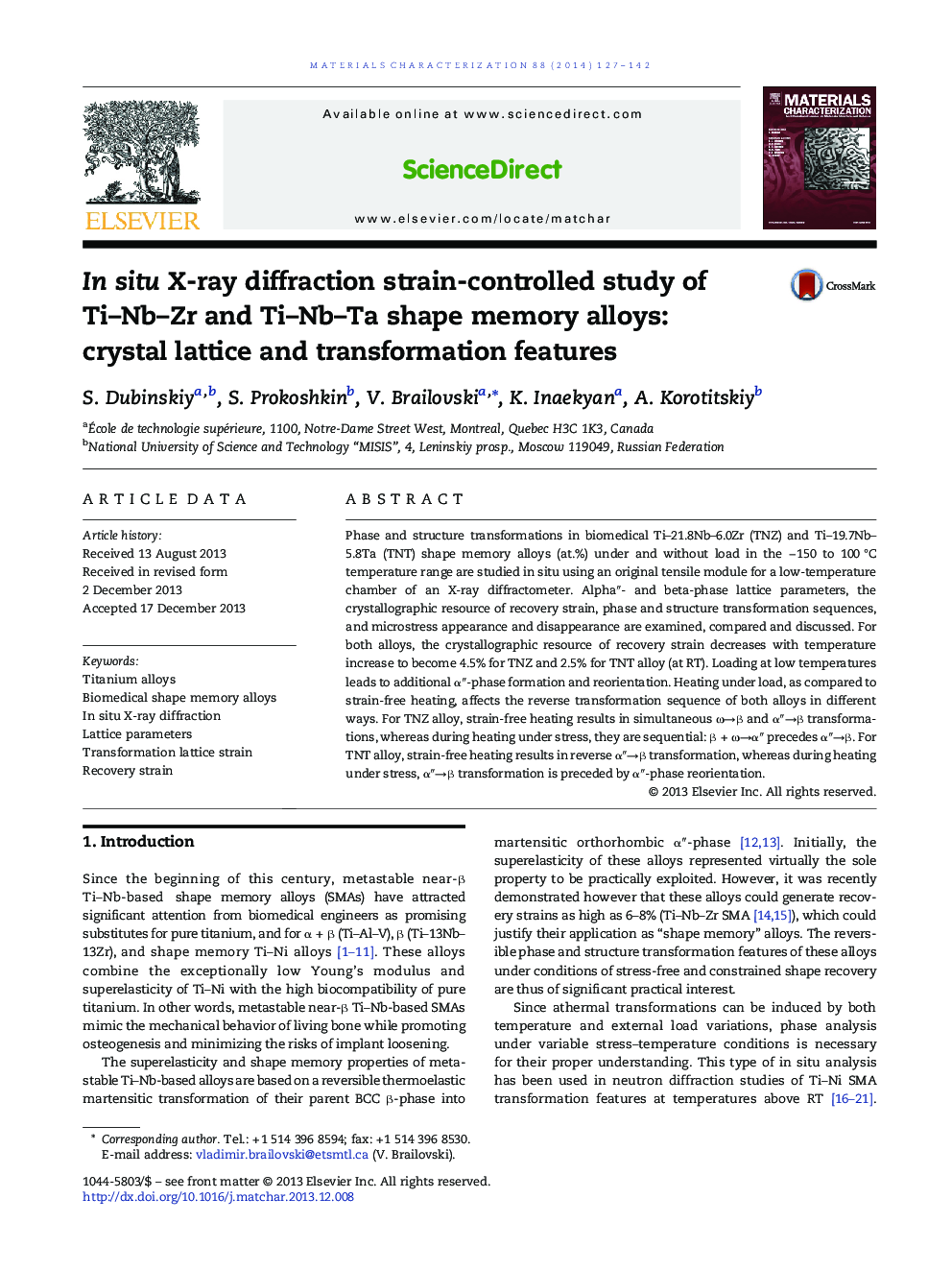| Article ID | Journal | Published Year | Pages | File Type |
|---|---|---|---|---|
| 1571108 | Materials Characterization | 2014 | 16 Pages |
Abstract
Phase and structure transformations in biomedical Ti-21.8Nb-6.0Zr (TNZ) and Ti-19.7Nb-5.8Ta (TNT) shape memory alloys (at.%) under and without load in the â 150 to 100 °С temperature range are studied in situ using an original tensile module for a low-temperature chamber of an X-ray diffractometer. Alphaâ³- and beta-phase lattice parameters, the crystallographic resource of recovery strain, phase and structure transformation sequences, and microstress appearance and disappearance are examined, compared and discussed. For both alloys, the crystallographic resource of recovery strain decreases with temperature increase to become 4.5% for TNZ and 2.5% for TNT alloy (at RT). Loading at low temperatures leads to additional αâ³-phase formation and reorientation. Heating under load, as compared to strain-free heating, affects the reverse transformation sequence of both alloys in different ways. For TNZ alloy, strain-free heating results in simultaneous Ïâβ and αâ³âβ transformations, whereas during heating under stress, they are sequential: β + ÏâαⳠprecedes αâ³âβ. For TNT alloy, strain-free heating results in reverse αâ³âβ transformation, whereas during heating under stress, αâ³âβ transformation is preceded by αâ³-phase reorientation.
Related Topics
Physical Sciences and Engineering
Materials Science
Materials Science (General)
Authors
S. Dubinskiy, S. Prokoshkin, V. Brailovski, K. Inaekyan, A. Korotitskiy,
